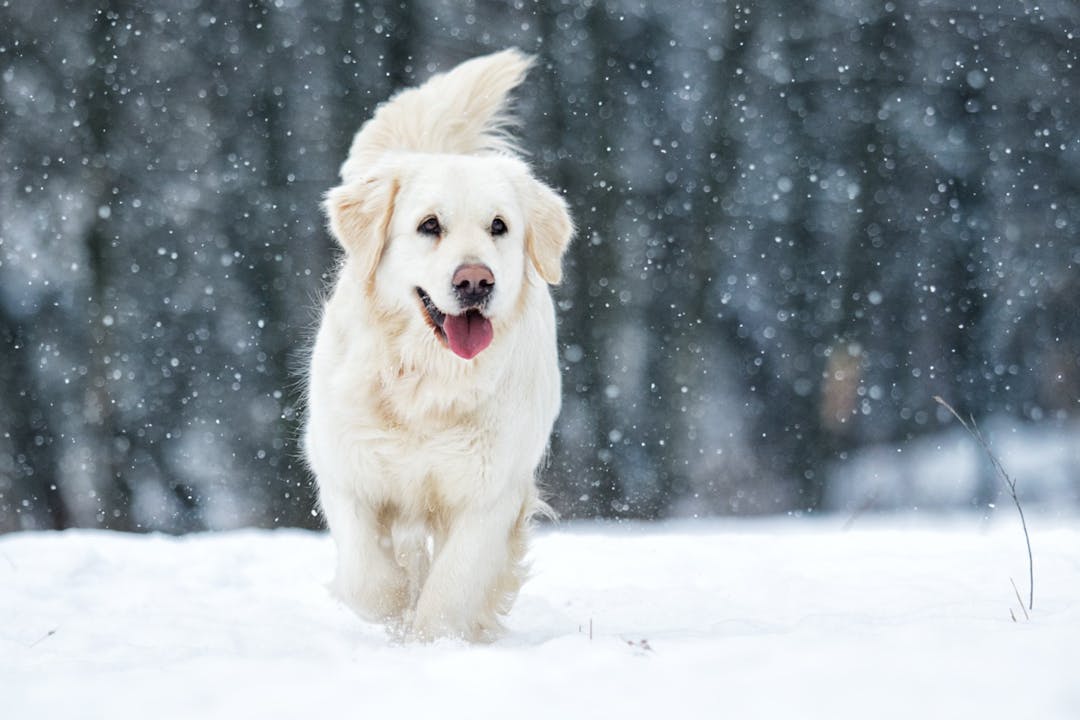Winter sets in and sparkling snow blankets your neighborhood into a winter wonderland. Take a moment to take it all in… but then prepare your pet and home for the season. Along with the changing season are new threats to prepare for. Cold temperatures and a variety of winter hazards pose serious risks to pets – some with deadly consequences. The following is a quick guide to help you navigate the snowy season with your pet’s safety and wellbeing in mind.
Snow safety – protecting your pup
The snow can be a magical playground and a challenge for our furry friends. To keep your dog comfortable and happy during the winter, be sure to offer extra protection, particularly to smaller dogs whose bellies are lower to the ground and may come in contact with the snow. Additionally:
- Reduce overall time outdoors to minimize the risk of exposure to cold temperatures.
- Provide extra assistance to older and/or arthritic pets that are more prone to slipping on snow and ice.
- Check your pet’s paws regularly. Look for cracks, irritation and accumulating ice. Snow can get compacted between their toes leading to discomfort and possible injury.
After your outdoor adventure, be sure to inspect your pet’s paws again and clean them gently remembering to dry their paws thoroughly.
General dangers of cold weather
When the chilly winds blow, it’s important to take steps to protect your pets from the harsh elements. Keep dogs and cats snug and warm during winter’s harshest temperatures.
Dogs & winter
With a little advanced preparation, it’s easy to keep your dog safe and warm during cold winter months as you venture outdoors.
Use doggie booties – Consider using dog booties to shield their paws from road salt as well as chemicals from ice melt and antifreeze.
Watch where you walk – Avoid walking along the road where these chemicals accumulate and try to stick to grassy areas instead.
Winter grooming – If you groom your dog, be sure not to shave their coat down to the skin during the cold season, but do trim enough long hair so that ice doesn’t collect.
Winter apparel – Consider purchasing a doggie coat to keep them warm. Many pet stores carry a wide variety of pet clothing that is both useful and stylish! And if you bring your dog along for car rides, never leave them alone locked in the car. Freezing temperatures are just as dangerous to your dog as they are to you.
Cats & winter
It’s best to keep cats indoors at all times, but if you do allow your cat to venture outside, be sure that it’s under your careful supervision. Outdoor excursions should be kept to short periods of time. And remember that if it’s too cold for you to be outside, it’s definitely too cold for your cat to be outside. Cats are susceptible to many of the same hazards that dogs are, so don’t allow them to roam free where they can inadvertently get into road salt and antifreeze.
Keeping pets comfortable indoors during winter
Winter time can be really cozy, but also very dry indoors due to furnaces running 24/7. High heat and low humidity indoors can cause your pet to have itchy and flaky skin. To combat this, be sure to use a humidifier during winter months.
- Bathing pets – If you bathe your pets, be sure to use a moisturizing shampoo and do so sparingly during cold months.
- Pet beds – If parts of your home are chilly, consider using a pet bed to keep your pet out of direct contact with a cold floor.
- Seal up drafts – If possible, seal up drafty areas of your home to keep the cold outside.
- Pets with chronic illnesses – Pay particular attention to pets with hormonal problems and other chronic illnesses, such as Cushing’s disease. These pets may have trouble regulating their body temperature which puts them at higher risk of suffering from extreme temperatures – even indoors.
Keeping your pet’s comfort top-of-mind will help ensure your pet is more at ease when temperatures dip.
Dangerous & deadly winter hazards: road salt & antifreeze
Road salt might keep streets safer for human travel, but it can pose dangers to our pets. Oftentimes salt is combined with other chemicals that pose additional risks. Besides drying out and irritating their paws, salt is commonly ingested when pets groom themselves. This can lead to vomiting and the need to increase their water intake.
Antifreeze, with its sweet taste, can be particularly enticing (and deadly) to our pets. While it poses a threat year-round, the risk increases during winter months when it’s used in deicing products. Even a tiny amount – as little as a teaspoon – can cause kidney failure in pets. Opt for “pet-safe” antifreeze products that contain propylene glycol rather than the highly toxic ethylene glycol. But be forewarned – just because you’re using pet-safe products does not mean other people are doing the same. Be extra cautious outdoors wherever vehicles travel and park.
Being watchful during winter
As winter takes hold, remember that your pet relies on you for their safety and wellbeing. Whether you’re buying booties to protect little paws from road salt and antifreeze or providing a self-warming bed to keep them nice and cozy – your thoughtful actions make a world of difference to your pet’s safety and comfort. Taking the time to learn about the hazards that come with the changing seasons can go a long way in keeping your furry family members happy and healthy for years to come. Stay warm and cherish these special moments with your pet by your side.





